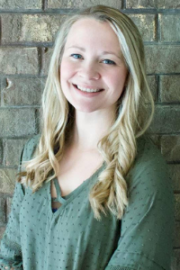
Sparkler Safety
Originally posted on sma.org on June 24, 2021
Sparklers can be a great deal of fun, but if improperly used that fun can quickly take a turn for the worse. Make sure your family, friends, and patients are aware of sparkler hazards to ensure a safe Fourth of July! Approximately 18,500 fires are started annually due to fireworks (NSC, n.d.). Sparklers are often the culprit, with the highest prevalence in emergency department visits among specific firework types (CPSC, 2018). This comes as no surprise considering that Sparklers burn at 2,000 degrees (NCS, n.d.). NCS advises that fireworks should only be used by professionals.
Safety Precautions
- Never attempt to make your own sparklers
- Only light one sparkler at a time
- Remain in an open area when using sparklers, away from structures
- Hold the sparkler still and away from your body
- Ensure there are no flammable materials nearby
- Never attempt to relight a sparkler that did not fully work
- Children should not be allowed to hold or light fireworks, including sparklers!
- Keep a bucket of water nearby (NCS, n.d.)
- Soak all fireworks in a bucket of water prior to throwing them away (Nemours, n.d.)
Safe Alternatives to Sparklers
- Confetti poppers
- Glow sticks
- Bubbles
- Colored streamers
- Noise makers
- Sticky hands
- Toy jumping frogs
- Bouncy balls
References and Resources
- Consumer Product Safety Commision (CPSC). (2018). Fireworks report. [Data set]. CPSC. https://www.cpsc.gov/s3fs-public/Fireworks_Report_2017.pdf?Jr0lMG0Z5QYQMTyUtYr_3GR.991BKn4l
- National Safety Council (NSC). (n.d.) Leave fireworks to the experts. https://www.nsc.org/home-safety/tools-resources/seasonal-safety/summer/fireworks
- Nemours (n.d.) Firework safety. Kidshealth. https://kidshealth.org/en/parents/fireworks.html
About the Author:
 Kaylee Carter is a Registered Nurse in the Burn Center at Wake Forest Baptist Health in North Carolina. Her medical career began as a phlebotomist in 2012. Since then she has climbed the degree ladder from CNA, LPN, ADN, and she is two semesters away from her BSN. She maintains ACLS, PALS, BLS, ABLS, and ABLS instructor certification. Kaylee has spent several years as a staff nurse on the Burn Center and recently stepped into the Clinical Nurse Educator role. She is very passionate about nursing retention and is the principal investigator for a research study related to burn nurse retention at her facility.
Kaylee Carter is a Registered Nurse in the Burn Center at Wake Forest Baptist Health in North Carolina. Her medical career began as a phlebotomist in 2012. Since then she has climbed the degree ladder from CNA, LPN, ADN, and she is two semesters away from her BSN. She maintains ACLS, PALS, BLS, ABLS, and ABLS instructor certification. Kaylee has spent several years as a staff nurse on the Burn Center and recently stepped into the Clinical Nurse Educator role. She is very passionate about nursing retention and is the principal investigator for a research study related to burn nurse retention at her facility.
